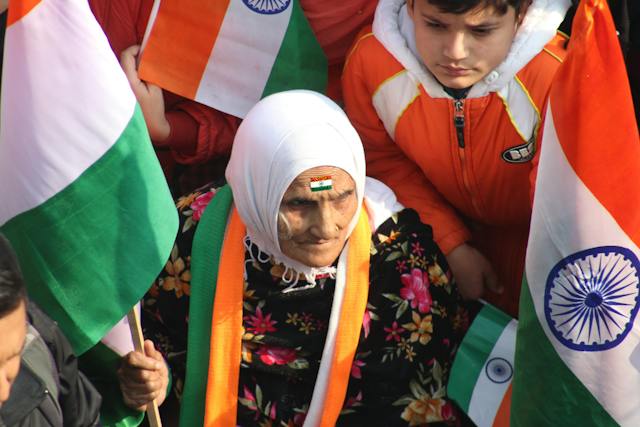Modern history of India, woven with tales of struggle, resilience, and transformation. Delve into dynamic epochs, from the fight for independence to post-colonial challenges. Explore the vibrant tapestry of India’s cultural, economic, and political evolution. Immerse yourself in the living history of a nation that emerged from the crucible of time, reflecting the indomitable spirit of its people. This blog navigates intricate chapters, celebrating diversity, honoring heritage, and contemplating the promises that lie ahead in contemporary India.
Colonial Echoes: Impact on Modern History of India
The colonial legacy in the context of India’s modern history is profound, shaping the nation’s trajectory in multifaceted ways. The British colonial rule, spanning nearly two centuries, left an indelible imprint on India’s social, economic, and political landscape.
Economic Impact: The British East India Company’s economic exploitation significantly altered India’s economic structure. The emphasis on resource extraction, deindustrialization, and imposition of heavy taxes led to economic impoverishment.
Social Transformations: The British tend to mold the social structure of the country as per their practices of the west , which also created tensions. The caste system was made more brutal to support their policy of ” divide and rule “, and missionary activities sought to influence religious practices, contributing to social complexities.
Political Consequences: The colonial era witnessed the rise of Indian nationalism. Movements like the Indian National Congress and leaders like Mahatma Gandhi advocated for independence, challenging British rule through non-violent resistance , and on other hand brave attempts of Bhagat Singh Chandrasekhar Azad and Subhash Chandra Bose too , put a huge pressure on the British rule.
Administrative Structures: The British introduced administrative systems that persist in modern India. Concepts like the district collectorate, police forces, and judicial systems were implemented during this period.
Cultural Influences: The colonial period influenced language, education, and cultural norms. English became a prominent language, and Western education systems were introduced, creating a cultural fusion that continues to shape contemporary India.
Understanding India’s modern history necessitates acknowledging and examining the complexities and enduring consequences of its colonial legacy. The struggle for independence and subsequent nation-building efforts reflect a nation overcoming the challenges posed by its colonial past.
The Struggle for Independence
In the annals of Modern India’s history, the struggle for independence stands as a testament to the indomitable spirit of the nation. The narrative unfolds with the sagas of iconic leaders, prominently Mahatma Gandhi, who led the charge with unwavering courage and a commitment to non-violence. The sacrifice of fearless heroes like Bhagat Singh and Chandra Shekhar Azad adds layers to the story, embodying the essence of the nation’s quest for freedom.
The Quit India Movement, a watershed moment in India’s fight against British colonial rule, emerges as a transformative event. Launched in 1942, the movement saw widespread protests, strikes, and civil disobedience, urging the British to “Quit India.” The echoes of this call reverberated across the nation, fueling a collective determination to break free from the shackles of foreign rule.
Simultaneously, the Azad Hind Fauz, led by Subhas Chandra Bose, marked another significant chapter. Bose’s vision of a liberated India spurred the formation of this force, contributing to the broader canvas of the struggle. The valor and sacrifices made by these freedom fighters culminated in the historic moment of August 15, 1947, when India declared independence.
This period of the nation’s history is etched with tales of resilience, determination, and unity. The sacrifices made during these transformative events paved the way for a free India, leaving an indelible mark on the collective consciousness of its people. The struggles of the past serve as a reminder of the price paid for freedom and the unyielding spirit that defines the modern identity of India.
Partition and Independence: Exploring the Tapestry of India's Nationhood
The Partition of India, a pivotal chapter in the Modern History of India, unfolds as a poignant narrative filled with emotional upheaval, challenges, and triumphs. This historic event, transpiring in 1947, marked the division of British India into two independent nations – India and Pakistan.
The partition process was characterized by mass migrations, communal violence, and the heartbreaking displacement of millions. Families and communities were torn apart as people embarked on arduous journeys to cross newly drawn borders in pursuit of a new life in either India or Pakistan. The accompanying communal tensions and violence left an indelible scar on the collective memory of the subcontinent.
Amidst the challenges, the birth of two independent nations was a momentous triumph. India emerged as a sovereign state, embracing its diversity and unity in the face of adversity. Pakistan, too, embarked on a journey of nation-building.
The partition, however, came at a tremendous cost, with widespread human suffering and loss. The narratives of those who lived through this period are a testament to the resilience of the human spirit in the face of adversity.
Understanding the partition is crucial for comprehending the complexities of the post-independence landscape. It reflects the intricacies of nation-building, the diverse cultural tapestry, and the challenges of fostering harmonious coexistence. The Modern History of India is forever shaped by the events surrounding partition, reminding us of the enduring importance of unity, tolerance, and the pursuit of a peaceful coexistence.
Post-Independence Challenges: A New Struggle
In the aftermath of independence, India confronted a myriad of challenges that demanded astute governance and strategic planning. The nascent nation embarked on a journey of economic development, seeking to uplift its vast populace from the shackles of poverty. The period witnessed visionary initiatives such as the Five-Year Plans, designed to propel industrialization and agricultural growth.
Social reforms became a cornerstone of post-independence India, aimed at dismantling age-old hierarchies and fostering equality. Initiatives like the Hindu Code Bill and affirmative action policies sought to bring about a more inclusive and just society. The integration of princely states, a delicate task masterfully executed by Sardar Vallabh Bhai Patel, consolidated the diverse regions into the unified entity we recognize today.
This era was marked by the charismatic leadership of figures like Jawaharlal Nehru, whose commitment to secularism and democratic ideals shaped the nation’s ethos. The establishment of institutions like the Planning Commission and the focus on education and scientific research laid the foundation for India’s intellectual and technological prowess.
While navigating the complexities of a diverse and aspiring nation, post-independence India forged ahead, laying the groundwork for a new chapter in its history. This period set the stage for subsequent decades, where the resilience of the Indian spirit would be tested and reaffirmed in the face of evolving global dynamics.
India's Economic Renaissance: Navigating Growth Through Reforms
In the chronicles of India’s modern history, the saga of economic transformation unfolds with compelling narratives. This journey traverses the verdant fields of the Green Revolution, delves into the humming factories of industrialization, and culminates in the groundbreaking economic reforms of the 1990s. This blog invites you to witness the economic renaissance that propelled India into the global arena, creating a narrative of growth, resilience, and visionary reforms.
In the agricultural landscape, the Green Revolution stands as a beacon of agricultural productivity. The fertile fields, once dependent on traditional farming methods, embraced technological advancements that revolutionized the agrarian sector. The shift towards high-yielding crop varieties, coupled with modern irrigation techniques, not only ensured food security but also transformed India into a surplus food-producing nation.
The rhythmic hum of industries echoed the nation’s aspirations during the era of industrialization. India’s foray into heavy industries and manufacturing not only diversified the economy but also fostered job creation on a massive scale. The nation’s economic fabric began to weave a tapestry of diversity, with sectors ranging from textiles to steel contributing to its newfound industrial might.
The economic landscape witnessed a paradigm shift in the 1990s with landmark reforms that liberalized, privatized, and globalized the economy. Opening the doors to foreign investment, dismantling licensing raj, and fostering a more competitive market, these reforms catalyzed India’s emergence as a global economic player.
Harmony in Diversity: Tracing India's Socio-Cultural Tapestry of Progress
In the canvas of modern India, the socio-cultural evolution unfolds as a vibrant tapestry, woven with threads of diversity, secularism, and cultural richness. The nation’s journey is marked by significant strides in science, technology, and education, elevating India’s global standing.
Celebrating Diversity: Modern India stands as a testament to its rich cultural mosaic, where myriad traditions, languages, and customs coalesce to form a harmonious blend. The cultural diversity is not merely a reflection of the past but a living, evolving entity that embraces and celebrates differences. Festivals, rituals, and artistic expressions contribute to the kaleidoscope of Indian culture, fostering unity in diversity.
Secularism in Practice: One of the pillars of modern India is its commitment to secularism—a principle ingrained in the nation’s ethos. The secular fabric ensures equal treatment of all religions, fostering a society where people of different faiths coexist harmoniously. This commitment to secularism serves as a foundation for a pluralistic society that values inclusivity and tolerance.
Advancements in Science and Technology: The latter half of the 20th century witnessed India’s leap into the realm of scientific and technological advancements. From space exploration to information technology, Indian scientists and innovators have made significant contributions globally. India’s prowess in space missions, nuclear technology, and IT services has solidified its position as a key player in the international scientific community.
Educational Empowerment: The educational landscape of modern India has evolved to nurture intellect and innovation. The emphasis on education as a tool for empowerment has led to a surge in institutions of higher learning, producing skilled professionals and thinkers. Educational reforms have played a pivotal role in shaping an informed citizenry that contributes to the nation’s progress.
India's Political Odyssey: Navigating Challenges and Successes in Democracy's Embrace
In tracing the political landscape of India, the journey unfolds as a compelling odyssey, traversing the early years of democracy to the intricacies of contemporary governance. This exploration sheds light on the challenges and successes that have sculpted India’s political identity.
Early Years of Democracy: India’s political narrative began with the adoption of a democratic framework, making it the world’s largest democracy. The early years were marked by the framing of the Constitution, with leaders like Dr. B.R. Ambedkar playing a pivotal role. The democratic ethos became the cornerstone, establishing the nation’s commitment to governance by the people, for the people.
Challenges in the Political Terrain: The political landscape of India has not been without challenges. Periods of economic downturns, political instability, and social unrest tested the resilience of the democratic structure. Understanding these challenges provides insights into the adaptive nature of Indian democracy, showcasing its ability to address and overcome adversities.
Successes in Contemporary Governance: As India strides into the contemporary era, the political landscape witnesses successes that reflect the maturation of its democratic institutions. Economic reforms, technological advancements, and progressive policies contribute to the nation’s growth and development. The political identity of India today is shaped by a commitment to inclusivity, development, and diplomatic prowess on the global stage.
Evolution of Political Thought: The political landscape is not static but evolves with the changing dynamics of society. Political thought in India has seen diverse ideologies and movements, contributing to the pluralistic nature of its democracy. Understanding this evolution provides valuable insights into the political mindset that guides governance in modern India.


